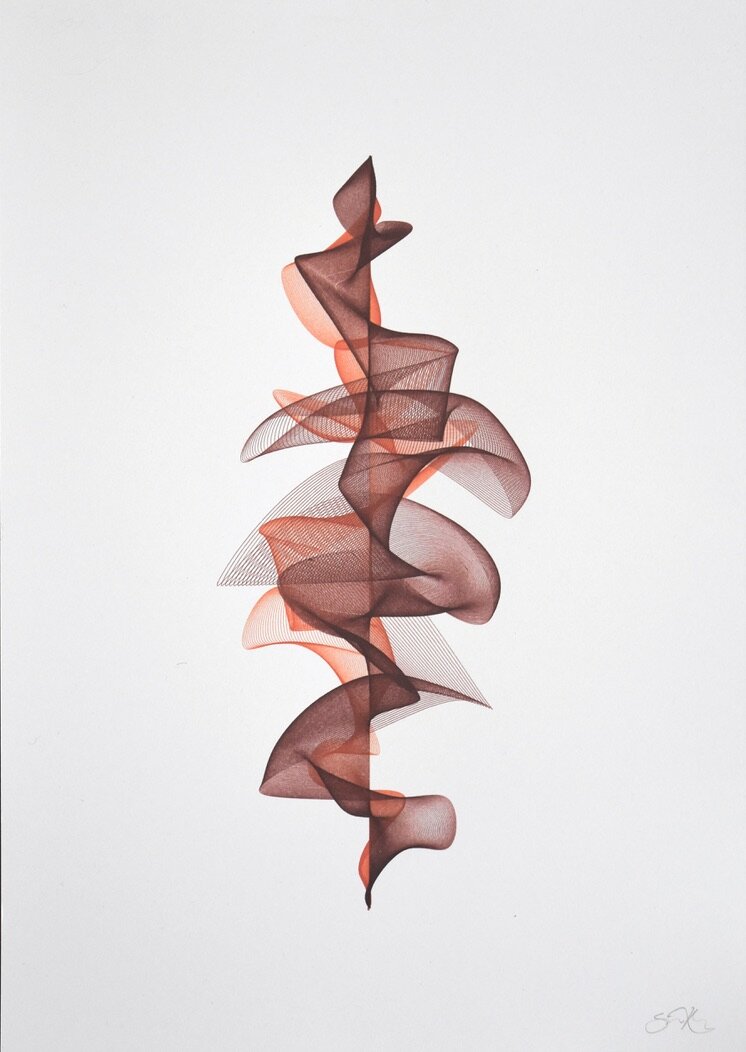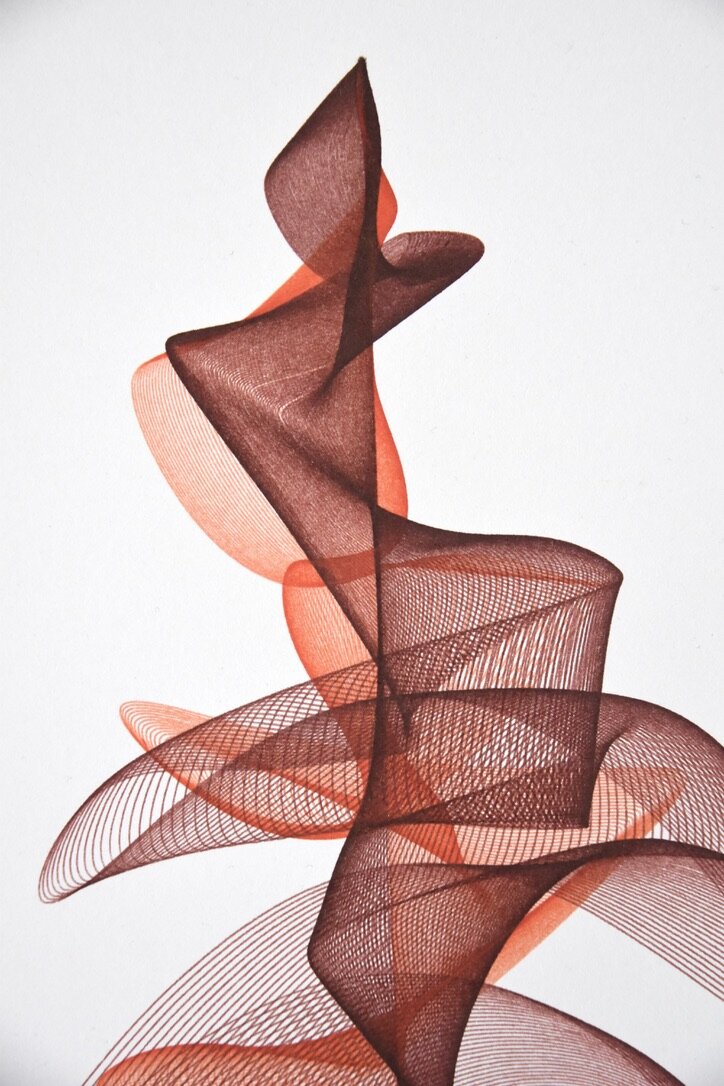Waves in brown and orange
Waves in brown and orange, original drawing. Custom software, drawing robot, Bic ballpoint pen in brown and orange on 300gsm board. 42 x 30 cm, unframed. This is a unique, original drawing, not a print.
I am interested in the role of machines as part of the extended mind, especially when it comes to creative activities. We are used to using tools to create things, but there’s something interesting that happens when that tool is sufficiently complex as to bring its own unpredictable biases into play. We’re used to thinking of robots as devices of infinite precision, but that really isn’t the case. In making these drawings, I start with writing an algorithm, and then render the results of running that algorithm on paper using familiar tools like fountain pens controlled by a simple robot. The resulting image bears the hallmark not only of my original idea expressed algorithmically, but also the biases and imperfections brought about by the physicality of the machine. As with much of my work, I find that including a robot as part of the process leads strangely to an outcome that is more organic, and perhaps even, more human.
Most of my drawings have elements in them that are not under my control. They appear to be random, but in fact most computers actually cannot generate true randomness. Instead the process needs to be given a “seed” each time the algorithm is run.
For each drawing sold, I will donate £5 to Trees for Life, to offset carbon and support the rewilding of the Scottish Highlands.
Note: pen ink may fade under strong UV light.
Waves in brown and orange, original drawing. Custom software, drawing robot, Bic ballpoint pen in brown and orange on 300gsm board. 42 x 30 cm, unframed. This is a unique, original drawing, not a print.
I am interested in the role of machines as part of the extended mind, especially when it comes to creative activities. We are used to using tools to create things, but there’s something interesting that happens when that tool is sufficiently complex as to bring its own unpredictable biases into play. We’re used to thinking of robots as devices of infinite precision, but that really isn’t the case. In making these drawings, I start with writing an algorithm, and then render the results of running that algorithm on paper using familiar tools like fountain pens controlled by a simple robot. The resulting image bears the hallmark not only of my original idea expressed algorithmically, but also the biases and imperfections brought about by the physicality of the machine. As with much of my work, I find that including a robot as part of the process leads strangely to an outcome that is more organic, and perhaps even, more human.
Most of my drawings have elements in them that are not under my control. They appear to be random, but in fact most computers actually cannot generate true randomness. Instead the process needs to be given a “seed” each time the algorithm is run.
For each drawing sold, I will donate £5 to Trees for Life, to offset carbon and support the rewilding of the Scottish Highlands.
Note: pen ink may fade under strong UV light.
Waves in brown and orange, original drawing. Custom software, drawing robot, Bic ballpoint pen in brown and orange on 300gsm board. 42 x 30 cm, unframed. This is a unique, original drawing, not a print.
I am interested in the role of machines as part of the extended mind, especially when it comes to creative activities. We are used to using tools to create things, but there’s something interesting that happens when that tool is sufficiently complex as to bring its own unpredictable biases into play. We’re used to thinking of robots as devices of infinite precision, but that really isn’t the case. In making these drawings, I start with writing an algorithm, and then render the results of running that algorithm on paper using familiar tools like fountain pens controlled by a simple robot. The resulting image bears the hallmark not only of my original idea expressed algorithmically, but also the biases and imperfections brought about by the physicality of the machine. As with much of my work, I find that including a robot as part of the process leads strangely to an outcome that is more organic, and perhaps even, more human.
Most of my drawings have elements in them that are not under my control. They appear to be random, but in fact most computers actually cannot generate true randomness. Instead the process needs to be given a “seed” each time the algorithm is run.
For each drawing sold, I will donate £5 to Trees for Life, to offset carbon and support the rewilding of the Scottish Highlands.
Note: pen ink may fade under strong UV light.


